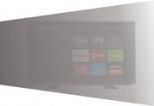The Bluetooth Advantage in the IoT Market
Bluetooth is positioned to make inroads into the general IoT market. With Bluetooth mesh and continued support for classic Bluetooth and BLE, the protocols are there to allow for many IoT use cases. In this brief post, I'll discuss the 2020 Market Update from the Bluetooth SIG and its implications for the future of IoT.
Continue reading...











